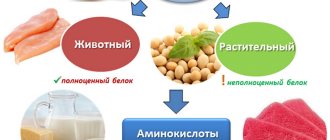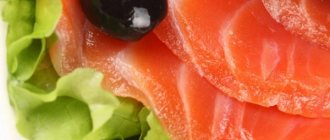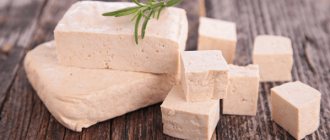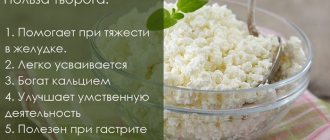What determines the fat and protein content in cow's milk?
Cow's milk is a natural storehouse of nutrients and microelements. It is rich in proteins, fats, lactose, vitamins, healthy salts, enzymes and many other essential elements. On average, whole milk from cows contains: proteins - 3.2%, fats - 3.8%, lactose - 4.8%, useful macro- and microelements - about 1%, which in total amounts to about 13% of dry matter. The digestibility of protein, fat and lactose by the human body varies from 95% to 98% depending on the composition.
The nutritional value of dairy products and the cost of milk when selling it for processing directly depend on the quantity and quality of components contained in milk. Undoubtedly, by increasing the level of protein and fat in this product, the agricultural producer is guaranteed to increase the profitability of dairy production.
In our time, the increased protein content in whole milk is of particular value. Thus, in countries with highly developed dairy farming, up to 60% of the cost of milk produced depends on the level of protein content in it.
The protein content of cow's milk varies from 2.8% to 3.6%. There is a direct dependence of the level of fat in milk on the percentage of protein content in it, that is, the higher the protein saturation, the fattier the milk.
What are milk proteins?
These are substances consisting of amino acids linked by peptide bonds. They are available in the drink in the form of two types: casein and whey. Whey protein makes up about eighty percent, and casein only twenty percent (of the total composition of the product).
Casein: formed from the mineral calcium. Under the influence of lactic acid bacteria, casein coagulates and precipitates. Thus, products are produced: kefir, yogurt, cottage cheese. This protein takes a long time to digest (about seven hours). It is often used in diets by those people who want to lose excess weight.
Whey contains proteins: albumin and globulin. It is from them that protein-rich products are produced for athletes and young children. These proteins are easily digestible and contain nine important amino acids that our body needs. Whey protein also has the ability to relieve stress. It reduces the level of the hormone cortisone in our body and increases the production of serotonin.
Which cows have the highest protein and fat content in milk?
The global gene pool of dairy cattle is about 1000 breeds. The fat content of milk from a black-and-white cow (3.6%) that is customary for domestic agricultural producers is by no means a standard. The level of fat in the milk of some cow breeds can reach 6.8% and even 8%, which is similar in fat content to cream.
Owners of Jersey and Ayrshire breeds are especially proud of the quality and fat content of their pets' milk.
The Jersey breed has very ancient roots. Its name is associated with the place of breeding - the island of Jersey, located in the Bay of Saint-Malo of the English Channel. Despite the fact that there is no exact information about the origin of the breed, there is a hypothesis that the breed was developed by mixing the blood of cows from Brittany and Normandy.
The mild maritime climate and the diversity of pastures available throughout the year led to the development of dairy farming on the island of Jersey. To preserve the genetic purity of the breed, in 1789 the island authorities introduced a ban on the import of cattle of other breeds, and already at the beginning of the 19th century the breed began to be actively exported to the USA, European countries (including Russia), Australia, and the islands of New Zealand and to the African colonies.
The breed has a unique color in its own way - the body of the animal is covered with red or light brown hair. The belly and limbs of the cow are often covered in white spots. Sometimes the suit has dark shades. The cow's nose is dark brown, and the hooves and tips of the horns are also dark.
Jersey cows, although small in size (height at the withers is about 120 cm), have a proportional build. Live weight varies depending on the breeding location. Thus, the largest cows are found in the USA and Denmark, where the weight of calves at birth ranges from 18 to 22 kg, while most cows weigh from 400 to 450 kg, and bulls from 600 to 730 kg. However, it is in these countries that the weight of individual cows ranges from 500 to 520 kg, and the weight of bulls even reaches 800 kg.
The breed is characterized by high early maturity and productive milk yield. However, its distinctive feature is the consistently high protein content and excellent fat content of the milk. As noted by the German Cattle Breeders' Association, the average milk yield of 2,190 cows at the age of 5.3 years was 4,504 kg. The average protein content in cows' milk is 4.13%, and fat content is 6.19%. Similar measurements were made in Denmark. There, the average milk yield was 4453 kg, and the milk fat content was noted at 6.14%. Particularly productive individuals give milk yield from 8.5 to 10.2 thousand kg, and the fat content in their milk ranges from 7.0 to 7.4%
The highest productivity potential of Jersey cows can be revealed only with excellent management and a balanced feeding ration. Unfortunately, it is not recommended to breed this breed in genetic purity in its native country. The fact is that it is impossible to create unique and native natural conditions for the breed on the island of Normandy in our latitudes. Therefore, for the natural and climatic conditions of our country, the most acceptable option remains the selection of the Jersey breed with other dairy cows.
Thus, domestic and foreign studies suggest that crossing the Black-and-White and Jersey breeds gives good results. The results of selection are more impressive in size, in contrast to the Jersey breed, and the protein content in the milk of cows and its fat content increases in relation to the Black-and-White breed. At the same time, raising such half-breds for dairy production in Russia is becoming highly profitable due to the fact that the cost of their feed is significantly lower than that of feed for purebred Jersey cows.
Why is it necessary to monitor the fat and protein content of cows' milk?
Milk producers have at their disposal an effective tool for monitoring the level of balance in the diet of cows - control milking. However, these very valuable statistics often remain unclaimed. At the same time, analysis of the accumulated results of control milkings allows us to draw correct conclusions about the quality of the feed supplied based on fat content, protein and urea content, as well as increase future productivity.
Undoubtedly, the nutritional value of milk, among other things, is most significantly influenced by the quality of feed and the conditions of keeping dairy cows. It is especially important to ensure a stable and healthy microenvironment of the animal's digestive tract and udder.
Failure to maintain a balanced feeding diet and the desire to thoughtlessly increase productivity can lead to the development of pathologies such as ketosis, acidosis, persistent metabolic disorders, etc. One should not make hasty conclusions that cows of valuable dairy breeds, unlike breeds with low productivity, are more often susceptible to diseases. This is not true, since the productivity inherent in selection primarily depends on a reasonable balance of nutrients in the feed and routine analysis of milk quality.
The volume of milk yield, the protein content in cow's milk, fat content and urea indicators are the data, the analysis of which will allow us to assess the level of feed management and identify its errors. But, as noted earlier, agricultural producers often do not take this data into account and its value remains unclaimed. At the same time, analysis of control milk yields will significantly increase productivity if the following basic principles are observed:
- Control milking is a fait accompli, documented in a photograph, a note in a magazine or in an electronic database. And this is always a reflection of the specific milking time. Consequently, we can determine the sufficiency and nutritional value of a cow’s diet based on a clearly defined period of time. Statistical (preferably weekly) data on significant events in the feeding process will help us with this. These are the composition of feed and grazing time, the volume of concentrates added during feeding, etc. The collection and consolidation of this data can be ensured by using software products created specifically to automate the farm management process.
- The most effective analysis is during lactation or assessing data by year.
- The analysis should be carried out by productivity groups or in the context of the entire dairy herd, noting information for the following periods of lactation: the first 100 days; next 100 days; over 200 days. Comparing information about the performance of individual animals is impractical, since the protein content in cows’ milk, as well as its fat content, is always different.
- Attention should be paid to natural variations in milk production and milk quality. Thus, in the initial period of lactation, the protein content in cows’ milk and its fat content decrease (the period of colostrum excretion), then these indicators increase again. Therefore, you should not take into account data on the quality of milk in the initial 10 days of the lactation period.
Vitamins
Of the fat-soluble vitamins, cow's milk contains A, beta-carotene, E and K. Of the water-soluble vitamins, there are vitamins C, B1, B2, B3 (PP), B4, B5, B6, B9 and B12.
>’> >’> >’> >’> >’> >’> >’> >’> >’> >’> >’> >’> >’> >’> >’> >’> >’>
| Vitamins, content | Share of daily value per 100 g | |
| Vitamin A | 28.0 mcg | 3,1% |
| Beta carotene | 7.0 mcg | 0,1% |
| Alpha carotene | 0.0 µg | 0,0% |
| Vitamin D | 0.0 µg | 0,0% |
| Vitamin D2 | n/a | 0,0% |
| Vitamin D3 | 0.0 µg | 0,0% |
| Vitamin E | 0.0 mg | 0,2% |
| Vitamin K | 0.2 mcg | 0,2% |
| Vitamin C | 0.2 mg | 0,2% |
| Vitamin B1 | 0.0 mg | 3,3% |
| Vitamin B2 | 0.2 mg | 14,2% |
| Vitamin B3 | 0.1 mg | 0,6% |
| Vitamin B4 | 16.4 mg | 3,3% |
| Vitamin B5 | 0.4 mg | 7,1% |
| Vitamin B6 | 0.0 mg | 2,9% |
| Vitamin B9 | 5.0 mcg | 1,3% |
| Vitamin B12 | 0.5 mcg | 22,1% |
What does the level of fat and protein content in cows' milk indicate?
Milk fat content
Based on the level of fat content in milk, one can judge the structure of the feed. The fact is that fat in milk is formed with the help of acetic acid. It is synthesized in the rumen from fiber contained in feed. Thus, the fat content of milk directly depends on the quality of straw and hay. You can control the level of fat by monitoring the consistency of feed, its consumption for food, as well as the proportions of the supplied concentrate in relation to roughage and fiber-rich feed.
Based on the fat content of milk in the first weeks of lactation, you can determine the caloric content of the diet. As a rule, in the first month of lactation, the fat content of milk decreases significantly. The second decrease in fat levels occurs closer to the 10th week of lactation. Then the fat content gradually increases until the cow is released, that is, the animal’s fat reserves are compensated.
The graph shows: milk yield productivity, protein content in cows’ milk and its fat content in different weeks of the lactation period:
A high fat content (more than 5%) in the first six months and a month after calving indicates that the cow’s body begins to intensively attract its own accumulated fat. Often at this time, the protein content in cows' milk decreases and becomes less than 3.1%. This is usually a warning to the farmer that the cow may be in ketosis. Adult cows, whose metabolism is more active, are especially susceptible to this disease.
However, observations show that such an unfavorable development of events is also possible in those cows that were intensively fed during the previous lactation, as well as during the dry period. As a rule, despite the low feed consumption, the productivity of such animals increases sharply in the first weeks of lactation. The apogee of such diseases usually occurs between the 3rd and 5th week of lactation.
Low fat content may signal the development of acidosis. This is often a consequence of an unbalanced diet. Either at the beginning of lactation, concentrates predominated in the feed, or the feed itself was not enough. A significant decrease in the level of milk fat (by more than 0.4%) occurring in the period between two control milkings, as well as a decrease in the fat to protein ratio (below 1.0 cu) can serve as a warning to the farmer about probable acidosis.
If there is a decrease in milk fat content by 0.2–0.5% for the entire herd, this may indicate high humidity coupled with an increase in temperature in the barn above +27 °C. We should not forget that a decrease in the fat content of milk can be a consequence of the development of liver diseases, hooves, metabolic disorders, diarrhea and the presence of parasites.
The benefits of milk for the body
The benefits and harms of cow's milk have been disputed for many years. The rich composition and vitamin complex may suffer from the conditions in which the cow is kept. In general, the benefits to human health include the following effects:
- A unique source of nutrients and vitamins that completely saturate the body.
- A large amount of calcium will have a positive effect on the beauty of your teeth and the strength of your bones. That is why those who like to drink a mug of steamed drink are much less likely to seek the services of a dentist. In addition, the risk of osteoporosis is reduced.
- Proteins grow and strengthen muscle mass, which is why the product is especially popular among athletes. Its popularity is not inferior to chicken eggs.
- Vitamins reduce stress levels. That is why drink a glass of warm milk at night after a hard day at work. Just one glass and the tension that has accumulated during the day will disappear. Women experience relief from premenstrual syndrome.
- The product helps to gently reduce blood pressure, reduces the risk of stroke and other heart diseases.
- Getting rid of heartburn, improving the digestive system, normalizing the feeling of hunger.
- For a long time, a bottle or pack of this drink has been given to workers in difficult industries in order to strengthen the immune system and restore vitality.
- The drink will relieve stress, help you cope with anemia and help you rehabilitate after tuberculosis.
Milk is a tasty and healthy product that can keep the human body in good shape and help prevent diseases. That is why many people should definitely include this healthy drink in their daily diet.
How to increase the protein content in cow's milk
There are several recipes for increasing the amount of protein in milk:
- increasing the volume of feed;
- variety of diet;
- proper quality of feed;
- energy intensity of the diet;
- a reasonable balance of vitamins, salts, fiber and protein.
The volume of feed should be increased from the beginning of the lactation period in order to eliminate the lack of energy in the animal. At this time, the cow, which is highly productive, spends over 300 g of protein from the accumulated resources of the body. Adequate energy restores the cow's body weight, which helps stabilize milk protein levels within normal limits. The increased volume of feed will increase the protein content in cows' milk by 0.3% of the norm.
A varied diet ensures the most effective synthesis of milk components by maintaining a reasonable balance between feed containing coarse and juicy fibers and concentrates. Concentrates are responsible for delivering pectin, starch and sugar to the cow’s body. The share of these easily digestible carbohydrates ranges from 20 to 45% of the total dry matter mass. The highest value is inherent in a diet in which 40% of feed contains fiber, and concentrates - 60%. The lack of grain in the diet is accompanied by a lack of easily digestible carbohydrates.
The quality of concentrates and a balanced diet increases the fat content and protein level in milk. At the same time, excess feeding reduces the fat content of milk by 0.1% or more of the norm, and increases the normative level of protein by 0.2–0.3%.
It has a very significant effect on the quality of milk and the quality of grain mass. It is known that corn flakes increase the proportion of protein in milk, and oat flakes reduce its level by 0.2% of the norm. High-quality grain mass obtained by steaming, pressing, granulating or crushing helps to increase the proportion of protein in milk. At the same time, overfeeding with processed grain leads to a sharp drop in milk fat content and increases the risk of acidosis. To minimize the threat, it is necessary to dilute the grain fraction with molasses, beets, bran, etc.
To maintain the quality of milk in terms of protein, it is necessary to ensure a reasonable protein balance (digestible and crude protein). Attention should also be paid to the depth of protein breakdown in the rumen, which depends on the composition of the feed. Increasing the proportion of crude protein in them increases productivity, but does not have any effect on the protein level in milk. At the same time, its deficiency leads to a sharp decrease in protein levels.
It is known for certain that when the proportion of crude protein in feed is reduced from 17 to 9%, with each reduced percentage the protein level in milk decreases by 0.02% of the norm.
Homemade yogurt with milk powder
We already know how much protein is in milk per 100 grams – 3.6. There is about the same amount in yogurt with milk alone.
You can enrich it with protein by doing it yourself at home and adding the same skim milk powder in the process. Consider the recipe for a yogurt maker:
- low-fat milk – 1 liter;
- natural yogurt – 200 grams;
- skimmed milk powder – 4 tbsp. heaped spoons.
Mix yoghurt, milk powder and 200 ml regular milk until smooth. Stir the resulting starter into the remaining 800 ml of milk. Pour the resulting mixture into jars for the yogurt maker and proceed according to the instructions that come with the machine.
This recipe is different in that, in addition to enriching the yogurt with additional protein, we make it thicker.
This article makes it clear that, despite its composition not particularly rich in protein (see above for how much protein is in milk), this product serves as an excellent source material for cottage cheese, cheese, and so on, in which the protein content is several times higher.
Cow's milk contains 4.8 g of carbohydrates per 100 g of product, which is approximately 38% of the total energy per serving or 19 kcal. Calorie content - 50 kcal. Composition of cow's milk:
fats - 1.98 g, proteins - 3.30 g, carbohydrates - 4.80 g, water - 89.21 g, ash - 0.71 g.
Total sugar content - 5.1 g, fiber - 0.0 g, starch - n/a.
Cholesterol content - 8.0 mg, trans fat - 0.1 g.











